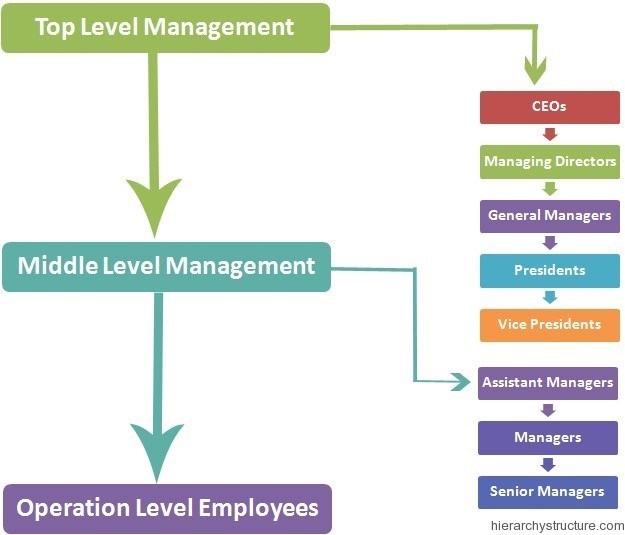— September 9, 2019
Managers and HR professionals must have a thorough understanding of what organizational culture is. They also need to understand what their specific organizational culture is. The culture of an organization is based on values that are derived from assumptions about the following.
- The relationship of the organization to its environment- This is how the organization defines its constituencies and business.
- Human nature- it is crucial to understand whether people are inherently bad or good, whether they are immutable or mutable and whether they are reactive or proactive. The basic assumptions lead to beliefs about how the customers, employees, and suppliers should interact and how they can be managed.
- Appropriate emotions- these are the emotions that people should be encouraged to express and the ones they should suppress.
- Effectiveness- these are the metrics that show whether the organization and its components are doing good. Organizations will only be effective when culture is supported by the business strategy and an appropriate structure for both the desired culture and the business.
Culture is an undefined aspect of organizations. It is a nebulous concept. There exists extensive academic literature that relates to the topic of organizational culture, but there is no universally accepted definition of organizational culture. Instead, the literature has numerous views as to what the culture of an organization is.
There are many ways that the culture of an organization can manifest itself. These ways include communication styles, leadership behaviors, corporate celebrations, and internally distributed messages.
Culture in a business compromises a lot of elements, so it is not surprising that the terms that define culture vary widely. Some of the commonly used terms for describing cultures include customer-focused, aggressive, fun, innovative, ethical, technology-driven, process-oriented, family-friendly, hierarchical and risk-taking.
Now that we have seen that it is difficult to define culture, organizations may have trouble when it comes to maintaining the consistency in creating and spreading their messages about culture. Employees also find it hard to communicate and identify perceived cultural inconsistencies.
Factors that Shape Culture
Leaders in organizations often talk about the unusual natures of their organizational cultures. They see their domains as special workplaces. Organizations that are known for their unique cultures are not many.
Most organizational cultures are not very different from one another. Companies in disparate industries such as health care and the manufacturing industry also share common core values. Nearly all the private sector companies want to increase their revenues and grow. Most of them try to play teamwork and demonstrate their concern for others.
The companies are driven and not relaxed because they compete for the market share and the money. Some of the characteristics that differentiate most organizations include:

Values
There are commonly shared business values at the heart of the cultures of an organization. There is none that is wrong or right, but organizations should decide on which values they want to emphasize. The common values include:
- People orientation- this is insisting on tolerance, fairness, and respect for all individuals.
- Outcome orientation- this is emphasizing results and achievements.
- Team orientation- this is valuing precision and dealing with problems and situations analytically.
- Stability- following a predictable course and providing security.
- Innovation– encouraging risk-taking and experimentation.
- Aggressiveness- encouraging a competitive spirit among the employees.
Hierarchy degree

This is the extent to which the values of an organization traditional channels of organizational authority.
We have three unique levels of hierarchy which are high – having a defined structure in an organization and expectation that people will work via official channels.
The second level of the hierarchy is moderate – having structures that are defined but accepting that people work outside their formal business channels.
The third level of the hierarchy is low – having job descriptions that are loosely defined and accepting that individuals challenge authority.
Organizations that have a high level of the hierarchy are more formal and move slowly compared to organizations that have a low level of hierarchy in an organization.
Degree of urgency
This defines how fast an organization needs or wants to drive innovation and decision making. Some businesses choose their degree of urgency while other businesses have it thrust on them by the nature of the market.
Organizational cultures that have a high level of urgency have a need to push projects through quickly and the high need to respond to the marketplace that is always changing. Moderate levels of urgency move projects at a pace that is reasonable. Low level of urgency in an organization means that people work consistently and slowly and value quality over efficiency.
Organizations that have high urgency are fast-paced, and they support a decisive style of management. Organizations with low urgency are more methodical, and they support a management style that is more considered.
Task Orientation or People Orientation
Businesses have a dominant way of valuing tasks and people. Organizations that have strong people orientation put people first when it comes to making decisions. Such organizations also believe that people drive the performance of the organization and productivity.
Organizations that have a strong task orientation put process and tasks first when it comes to making decisions. Such organizations believe that quality and efficiency drive the productivity and performance of the organization. Some businesses may get to choose their task and people orientations. But other organizations may have to fit their orientation to the historical issues, nature of their industry and operational processes.
Organizational subcultures
Apart from the dominant culture in an organization, organizations can have a mix of subcultures. Subcultures in an organization exist among individuals and groups that may have their own traditions and rituals. Although the subcultures may not be shared by the rest of the people in an organization, they can get deep and underscore the core values of the organization. The subcultures in an organization can end up causing a lot of problems.
You can find that in one department, there is a subculture of aggressiveness. The subculture will spread gradually throughout the organization as the employees interact with people from other departments.
Business & Finance Articles on Business 2 Community
(79)
Report Post






